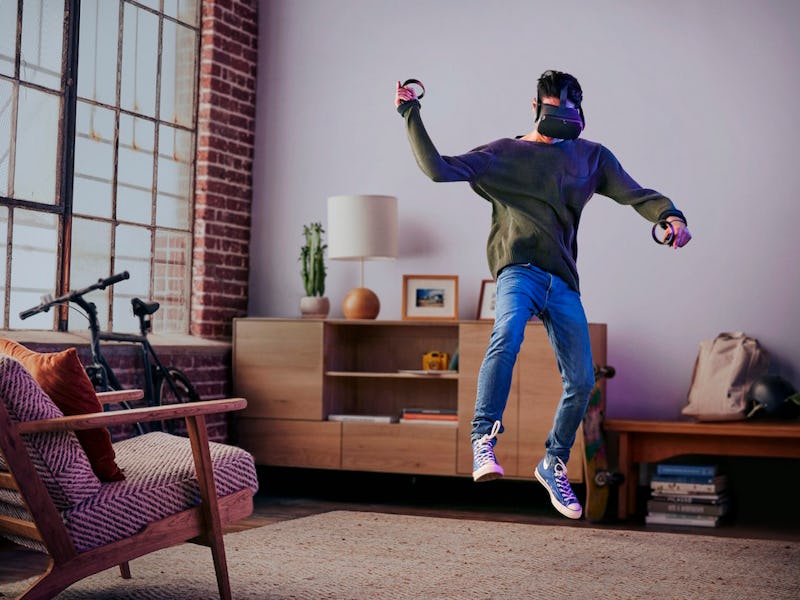Oculus Quest Ad Mysteriously Disappears From Official Oculus YouTube Page
This vision of the future is unavailable for viewing.

Oh dear. No sooner had Oculus announced the Quest virtual reality headset on Wednesday, the company’s big push hit a snag after one of its main “Under the Hood” promos was yanked from YouTube on copyright grounds.
The company unveiled its new 64GB $399 headset as part of its OC5 conference in San Jose, California. The Facebook-owned company announced plans to release an all-in-one headset with six degrees of tracking, plus touch controllers, with a built-in processor negating the need for a separate computer. The display offers up to 1,600 by 1,440 pixels per eye, the built-in audio offers deeper bass than the Oculus Go, and the headset is set to launch with over 50 titles.
Update: An Oculus spokesperson tells Inverse that has all the necessary rights and licenses for the content in the video, and is working to get it back online.
As is custom, it also made a video to explain all these features which, strangely, was promptly reported and taken down. Inverse was tipped to the removal by Twitter user Ort, who tweeted about the block at around 5 a.m. Eastern time. It was still down as of midday Thursday.
Visiting the video’s web page at the time of writing shows an entity called “ustv” has blocked the video on copyright grounds. A Google search for “ustv” leads to the top result as “USTVnow,” a television streaming service for American military and citizens abroad. Inverse cannot confirm that the two entities are one and the same, and the company did not respond to a request for comment prior to publication. Inverse has also contacted Oculus and Google for further comment.
The video's YouTube page at the time of writing.
The video also fails to play in embedded form:
YouTube’s copyright system has caused issues for its users in the past. A July 5 post on the YouTube help forums describes the website’s copyright claims system as “a joke,” as the user’s channel has been “targeted by fakers.” Photographer Aram Pan described his experiences with the system in a 2016 Petapixel article, noting that YouTube told him that the website does not mediate copyright disputes.
The website describes a Content ID claim as follows:
If you upload a video that contains copyright-protected material, you could end up with a Content ID claim. These claims are issued by companies that own music, movies, TV shows, video games or other copyright-protected material.
Content owners can set Content ID to block material from YouTube when a claim is made. They can also allow the video to remain live on YouTube with ads. In those cases, the advertising revenue goes to the copyright owners of the claimed content.
The support page notes that copyright owners can leave videos live on the site, while running ads on the video in question to earn some revenue. The holder can also choose to block the video, mute the audio, or restrict the platforms where the video can appear. Users can dispute a content ID claim, and the copyright owner has 30 days to respond. Users that receive more serious copyright strikes, which come from complete and valid legal requests to remove a video, have to follow a different dispute process.